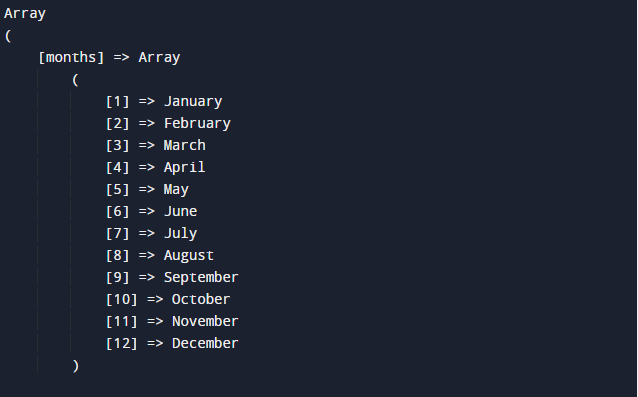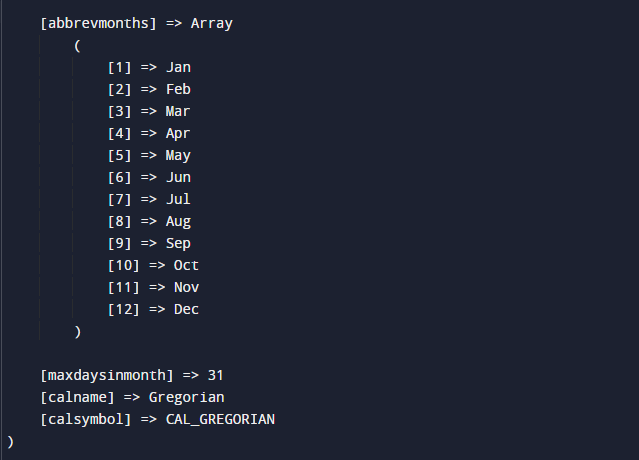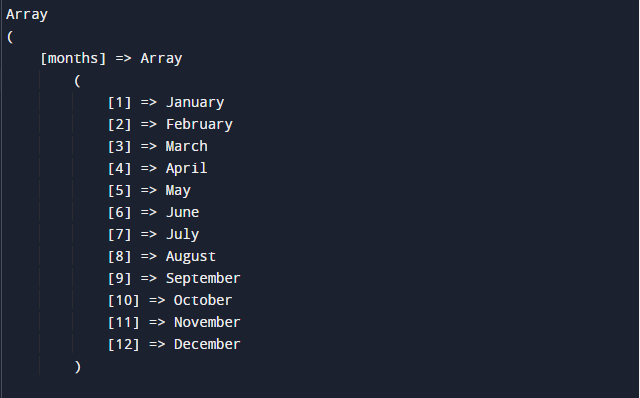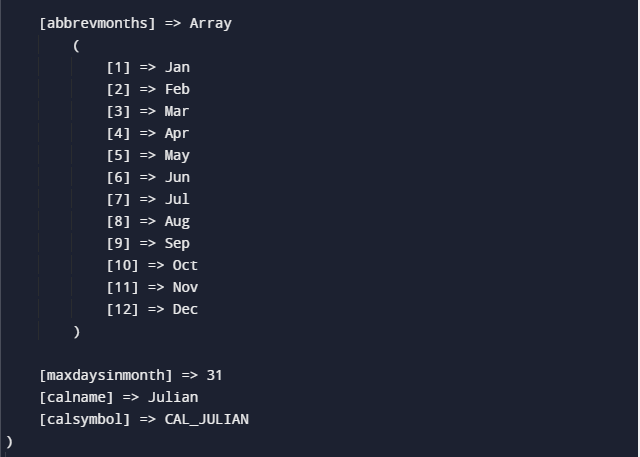This guide will shed light on the cal_info() function in PHP.
What is the cal_info() Function in PHP?
In PHP, the cal_info() function is extensively used to retrieve information about the calendar being used by the system. It provides an array of information related to the calendar, including the names of months and days, the day abbreviations, and other relevant details. This function is especially useful when working with different calendars, such as the “Gregorian”, “Julian”, or “Islamic” calendars, as it allows developers to gather calendar-specific information dynamically.
Syntax
The following is the syntax for the cal_info() function:
Parameter: It takes only one parameter as a ($calendar), that will replace it with the desired calendar number.
We will use the below-stated list of numbers in the calendar:
- (0) or (CAL_GREGORIAN) for Gregorian Calendar.
- (1) or (CAL_JULIAN) used for the Julian Calendar.
- (2) or (CAL_JEWISH) for Jewish Calendar.
- (3) or (CAL_FRENCH) for French-Revolutionary Calendar.
Return Value: It will return an array that holds the information about the specified calendar.
Note: The cal_info() function gives data about all the calendars if a null value will pass as a parameter.
Example 1: Use the cal_info() Function with an Integer Type Parameter in PHP
To use the “cal_info()” function with the integer-type argument, first, invoke the “cal_info()” and “0” as a parameter values. Then, save the result in the “$calender_info” variable. It will acquire the calendar information that is supplied as an argument. For instance, we pass the “0” digit as an argument which displays the information on the screen about the “Gregorian Calendar” using the “print_r()” function:
The result of the above-executed program has been displayed in the provided images:
Example 2: Use cal_info() Function with Calendar Name Parameter in PHP
To use the “cal_info()” function with the calendar name as an argument, first, declare a variable “$calendarInfo” which takes the value of the method “cal_info()” that is produced using the parameter “CAL_JULAIAN”. After this, apply the “print_f()” method to display the content that is saved in the variable “$calendarInfo”:
The output will be:
We have explained the “cal_info()” function in PHP.
Conclusion
In PHP, the “cal_info()” function is used when developers working with various calendars need dynamic access to calendar-specific information. Developers can retrieve a variety of calendar details with this method, including total days in a month, month names, day acronyms, and other helpful data. This guide gives a thorough explanation of the PHP “cal_info()” function.




